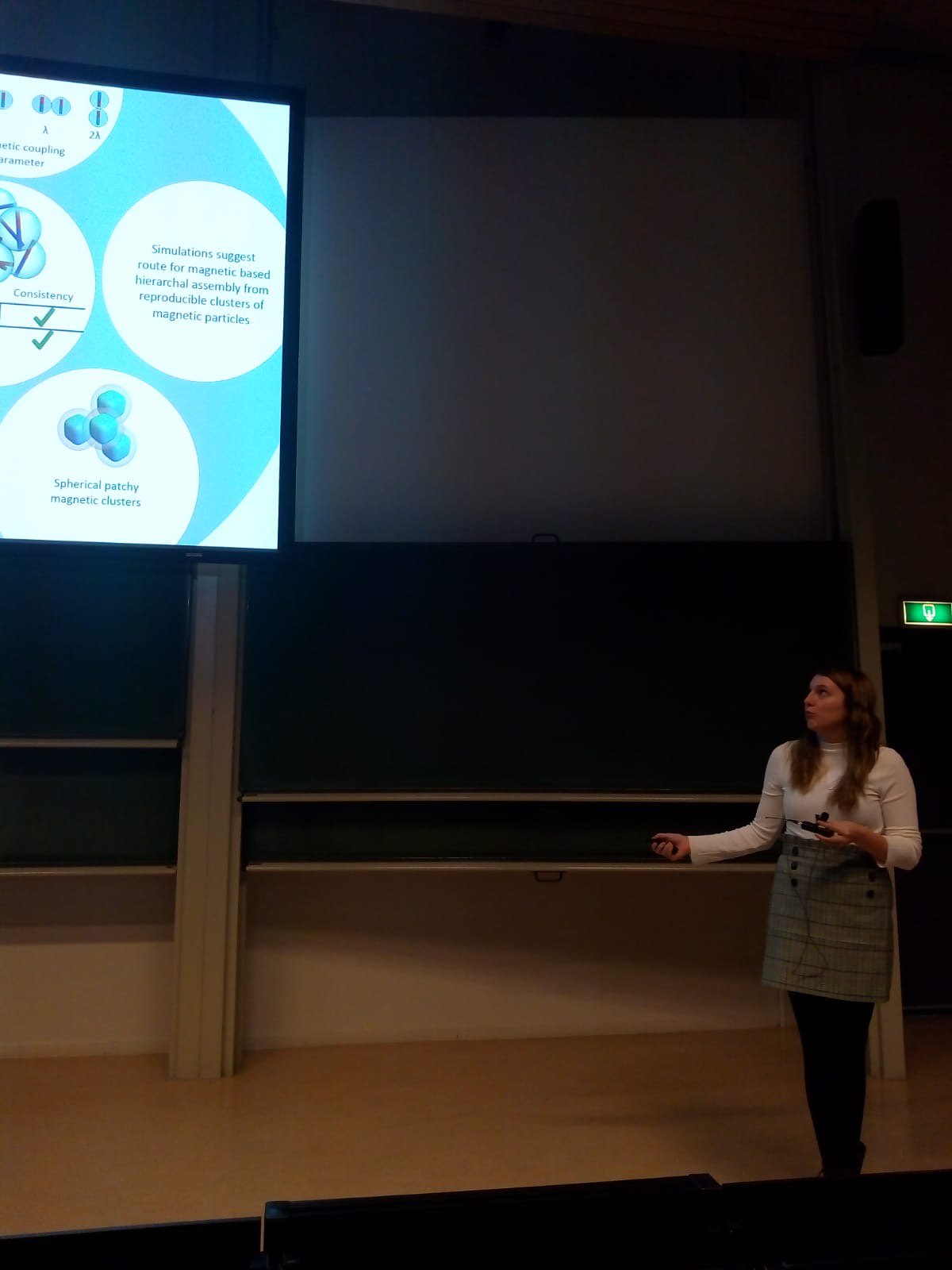Reflecting on the Dutch Soft Matter Meeting

Recently, I had the incredible opportunity to present my research on anisotropic magnetic polystyrene at the Dutch Soft Matter Meeting at the University of Amsterdam. Happening twice a year, it serves as a gathering of like-minded individuals passionate about exploring the fascinating world of soft matter.
I vividly remember my first year as a Ph.D. student, nervously stepping onto the stage to deliver a soundbite—a concise, two-minute pitch of my research. Back then, time felt constrained, and every word had to be carefully chosen to captivate the audience. But as I’ve grown in my academic journey, so too have my opportunities to share my work. Now, I find myself delivering full-fledged talks, confidently discussing the intricacies of my research.
This particular meeting was filled with remarkable speakers , each sharing their unique insights. Heinrich Jaeger from the University of Chicago kicked off the day, enlightening us about trainable soft matter. Alina Rwei from my department here at TUDelft followed, captivating us with her talk on using soft matter for precision therapeutics including wireless, biosensors that can be stuck to the skin of infants. Corinna Maass from the University of Twente brought a fresh perspective with her discussion on self propelling droplet swimmers, while Andrea Giuntoli from RUG explained that sometimes the wrong model can still help us design the right materials. The lineup continued with Paul Baconnier from AMOLF and his exploration of active elastic solids, Farshid Jafarpour from Utrecht University and his insights into the statistical physics of bacterial growth, and Christoph Dellago from the University of Vienna and his thoughts on machine learning for soft matter.
The meeting venue buzzed with excitement and intellectual exchange, as researchers from different backgrounds came together to share their discoveries. I was thrilled to present my findings on anisotropic magnetic polystyrene, delving into the complexities of its preparation and deformation.
As I concluded what would be my final talk as a Ph.D. student, a bittersweet mix of emotions washed over me. A sense of satisfaction and accomplishment tinged with a touch of melancholy filled the air. The discussions that followed were still rich with enthusiasm and curiosity, but there was an underlying awareness that this would be one of the last opportunities for fellow researchers to approach me as a PhD, eager to learn more about my work and share their own experiences.

The conference, once again, served as a poignant reminder of the power of scientific gatherings. It was a platform that fostered collaboration, creating an atmosphere where new connections were forged and boundaries of knowledge were pushed. Each interaction, each exchange of ideas, carried an added weight as I contemplated the culmination of my Ph.D. journey and the chapter that was coming to an end.
As I bid farewell to the conference, my mind buzzed with a whirlwind of ideas, and my heart overflowed with gratitude. Gratitude for the opportunity to share my research, engage with fellow scientists, and be part of a vibrant community. These meetings, with their ability to ignite passion and fuel the drive for knowledge, will forever hold a special place in my heart. And though this may mark the end of one chapter, I eagerly anticipate the next gathering of brilliant minds in the soft-matter research community, where new beginnings and exciting possibilities await.